Connor’s Three Week Mega-Post Extravaganza
- Connor Fullerton
- May 20, 2018
- 10 min read
It’s been just a hair over 3 weeks since I landed in St. Vincent. It’s been fun, busy, and a whirlwind of new experiences! In this post, I’ll be highlighting some of my experiences since I got here. There's lots of pictures too!
Getting Settled in ft. the Island Roads
After landing late in the evening on April 29th, it was an experience getting to my new home in St. Vincent. Night had already fallen, and I was incredibly jetlagged from the CMPA fresh produce tradeshow in Vancouver, BC the day before.

Flying in – Canon 7D, 18mm at f/3.5 for 1/25 second at ISO 320. Photo by Connor Fullerton on April 28th, 2018.
St. Vincent is much more mountainous that I imagined with narrow, winding cliff-side roads being the norm. Also, seeing a seemingly-oncoming car on the way out the airport was terrifying until I realized traffic drove on the opposite on the road than in Canada; on the brightside, I woke up immediately from my jet-induced snooze.

Vroooooooooom – Canon 7D, 18mm at f/5.6 for 1/20 second at ISO 400. Photo by Connor Fullerton on April 30th, 2018.
Surveying the Land
St. Vincent is incredibly lush. The mountains sprawl from one shore to the other. The volcanic mountains loom strikingly close-by always. The surrounding Grenadine islands and Bequia sit tantalizingly on the horizon. Frankly, the view here has taken my breath away. It is no surprise that I’ve eagerly visited the beach on a near-daily basis for the past two weeks. I’ve have a field day with my camera!

The beautiful lookoff from out apartment– Canon 7D, 18mm at f/5 for 1/500 second at ISO 100. Photo by Connor Fullerton on April 29th, 2018.
Learning the Dialect
I’ve never been to the Caribbean before now. Though I’ve lived far away from small hometown Truro, getting used to the accent here with its deep, fast tones was a big adjustment! In the past 2~3 weeks I have [fortunately] picked up on the cues and can get by [for the most part].
The Grocery Store
Being an International Food Business student and a foodie, I’ve had a grand time in the grocery stores. Before arriving, I expected to see a lot of locally grown produce on the shelves; however, imports are abundant. After doing some digging, it turns many farmers and small businesses cannot meet the very strict requirements of large retailers. As a result, the shelves are filled with many imported goods instead which sell at a much higher price (and a higher cost to provide) compared to their local counterparts. Many farmers who do not sell to the grocers find other ways to sell their product, often to passersby, outside of stores, and at the market, or sell to urban intermediaries.
Travelling to Black Point
One of the first scenic tours that I experienced was a trip out to Black Point. Black Point is one of the sites used in the original Pirates of the Caribbean movies! The view was gorgeous, and we found a coconut too: his name is Jasper.

Black Point Park – Canon 7D, 50mm at f/5 for 1/125 second at ISO 400. Photo by Connor Fullerton on April 30th, 2018.

On the beach at Black Point – Canon 7D, 19mm at f/8 for 1/100 second at ISO 400. Photo by Connor Fullerton on April 30th, 2018.
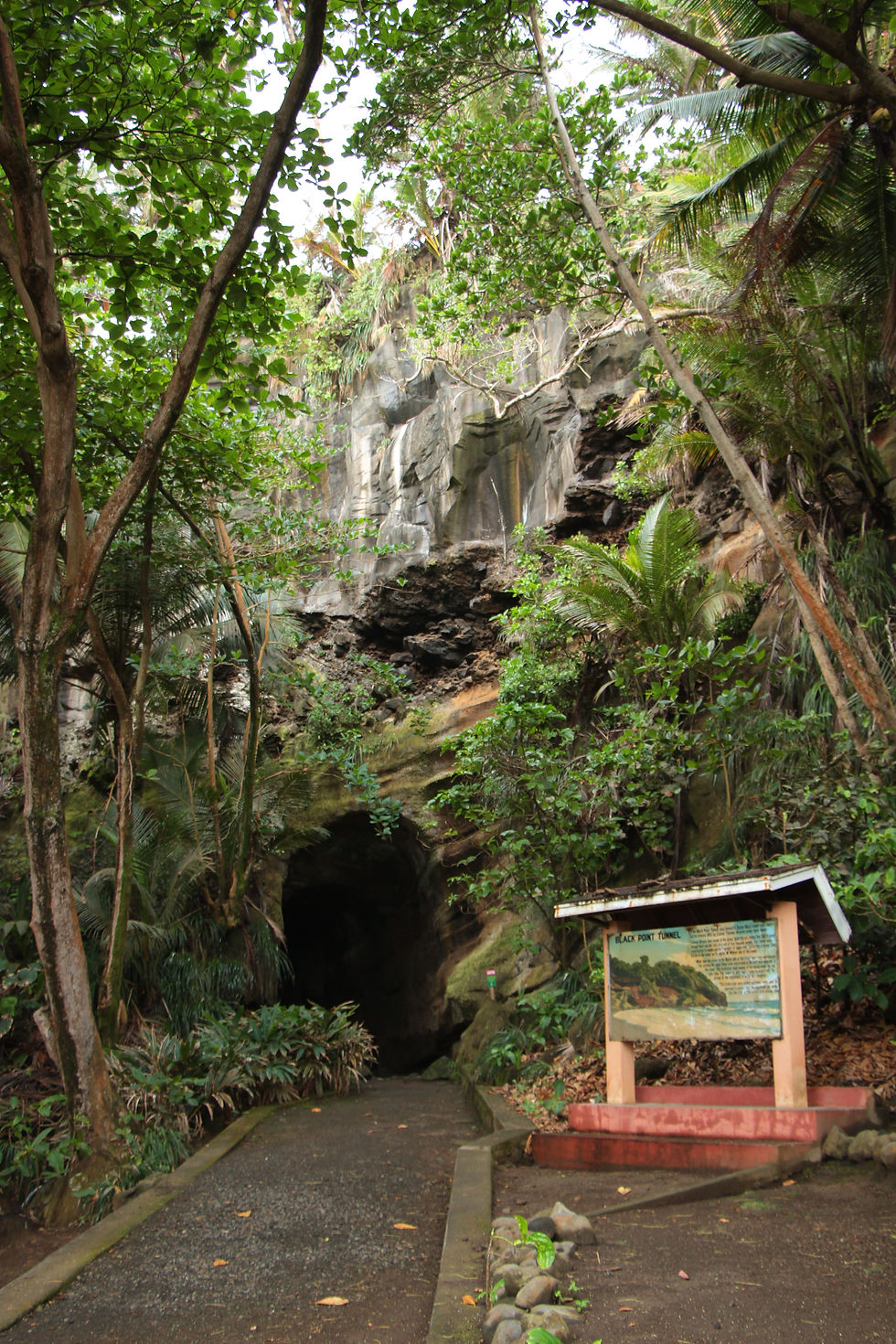
The tunnel at Black Point – Canon 7D, 24mm at f/4 for 1/25 second at ISO 400. Photo by Connor Fullerton on April 30th, 2018.
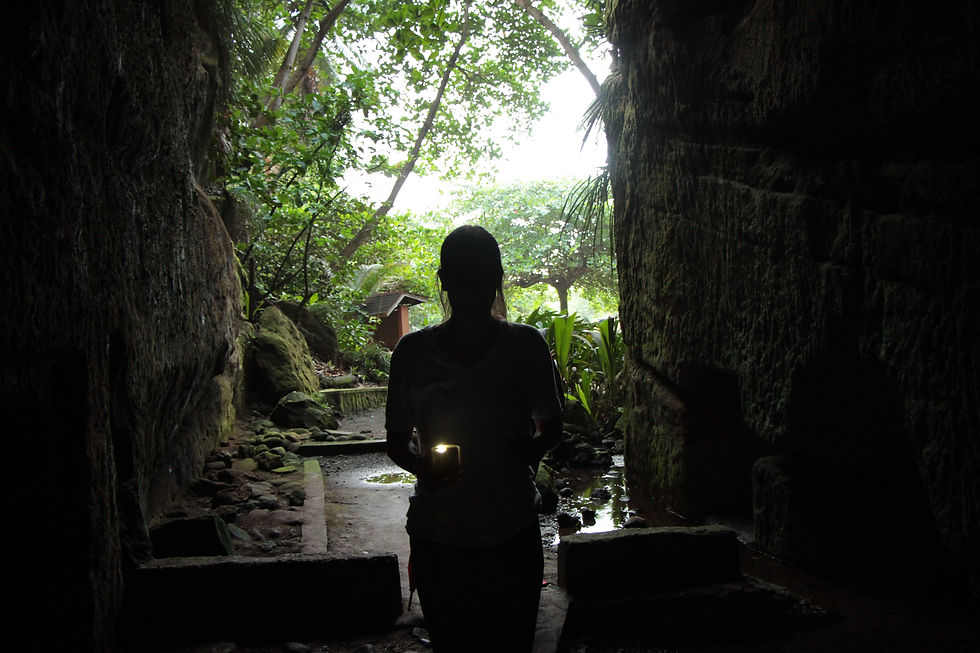
The tunnel at Black Point ft. scary bats a few seconds later – Canon 7D, 24mm at f/4 for 1/60 second at ISO 1600. Photo by Connor Fullerton on April 30th, 2018.

Jasper the Coconut – Canon 7D, 18mm at f/5.6 for 1/100 second at ISO 400. Photo by Connor Fullerton on April 30th, 2018.
Travelling the Country Side
At first glance, it comes as no surprise that St. Vincent is a volcanic island. The steep, jagged and sprawling hills cover the landscape, and it shapes the way the island’s inhabitants have come to develop the land. Roads cut along steep edges, houses crawl up the sides of hills, and farms run up either side of deep valley and over the peaks.

A stop while on route to Black Point - Canon 7D, 18mm at f/9 for 1/25 second at ISO 100. Photo by Connor Fullerton on April 30th, 2018.
Compared to Nova Scotia, I was impressed by how commonplace it was for farmers to use small plots for biodiverse collections of crops. It was normal to see several tree crops of varying species all growing adjacent to each other on one plot, whether it be mangos, avocados, almonds, nutmeg, and coconuts growing right next to each other. This diversity of crops, in addition to the sprawling hills, is a stark contrast to Nova Scotia’s relatively flat and far reaching farms that segregate each plot into monocrops. At first, I thought I might have seen a small sample and couldn’t compare it to the whole island, but even at the farmers’ market it was common place to see farmers grow and sell half-a-dozen different crops. I really enjoyed seeing the vast selection available from just a single farmer.
Fun fact: many of the names for areas in St. Vincent are from other parts of the world. So far, I’ve been to Montreal and Belmont, St. Vincent, as well as Montreal and Belmont, Canada. Wild stuff, folks.

From Belmont Lookoff and across the St. Vincent “Breadbasket” - Canon 7D, 55mm at f/5.6 for 1/400 second at ISO 100. Photo by Connor Fullerton on May 9th, 2018.
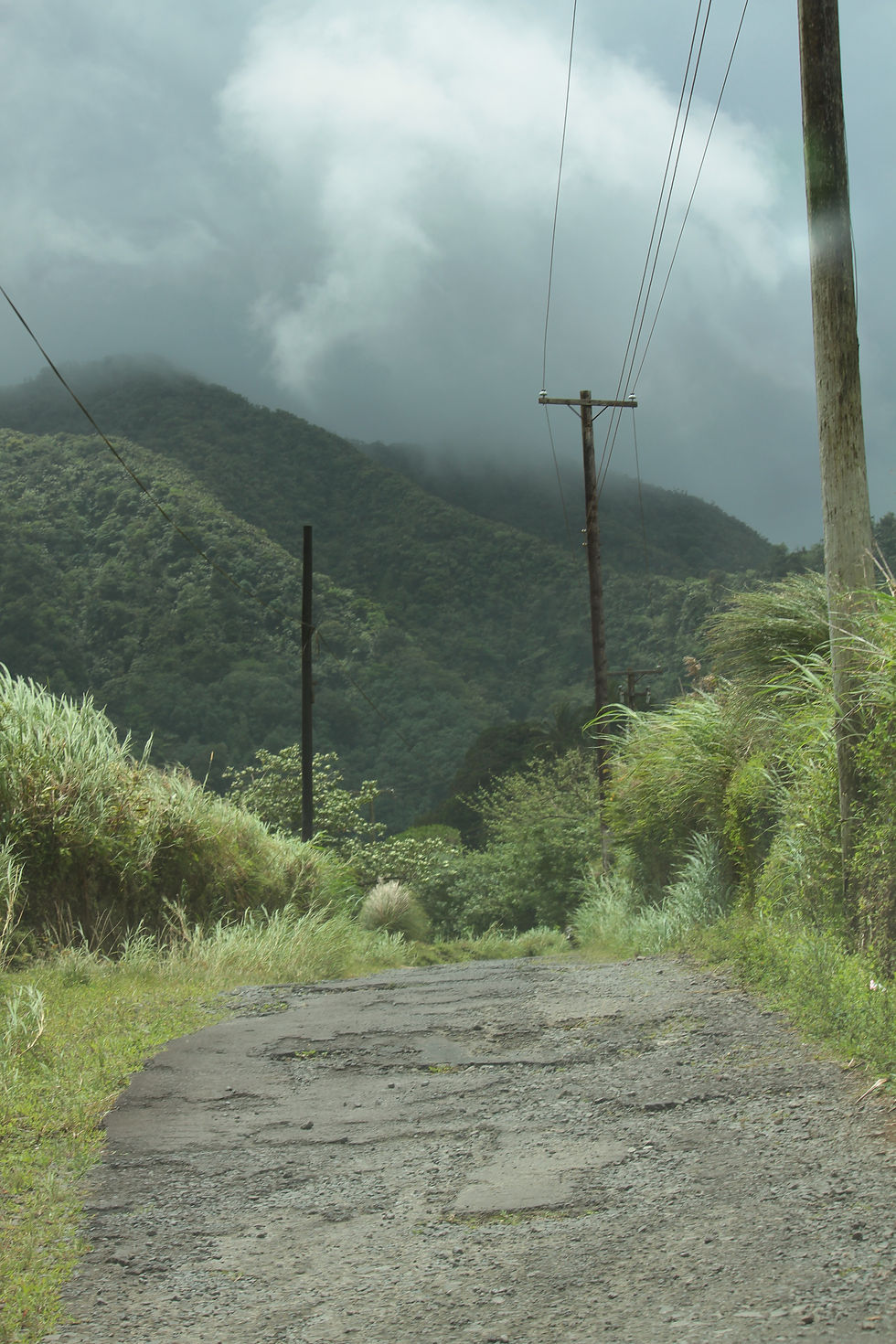
On the road to rural St. Vincent - Canon 7D, 55mm at f/6.3 for 1/400 second at ISO 100. Photo by Connor Fullerton on May 9th, 2018.

Farmer’s tending to their crops - Canon 7D, 117mm at f/6.3 for 1/320 second at ISO 100. Photo by Connor Fullerton on May 9th, 2018.
![Happy [and very cute] puppies at one farmer’s estate - Canon 7D, 250mm at f/6.3 for 1/200 second at ISO 100. Photo by Connor Fullerton on May 9th, 2018.](https://static.wixstatic.com/media/6b3165_17998f8a9ab64378a267b5b284138984~mv2_d_3456_5184_s_4_2.jpg/v1/fill/w_980,h_1470,al_c,q_85,usm_0.66_1.00_0.01,enc_avif,quality_auto/6b3165_17998f8a9ab64378a267b5b284138984~mv2_d_3456_5184_s_4_2.jpg)
Happy [and very cute] puppies at one farmer’s estate - Canon 7D, 250mm at f/6.3 for 1/200 second at ISO 100. Photo by Connor Fullerton on May 9th, 2018.

New seedlings - Canon 7D, 250mm at f/6.3 for 1/125 second at ISO 100. Photo by Connor Fullerton on May 9th, 2018.
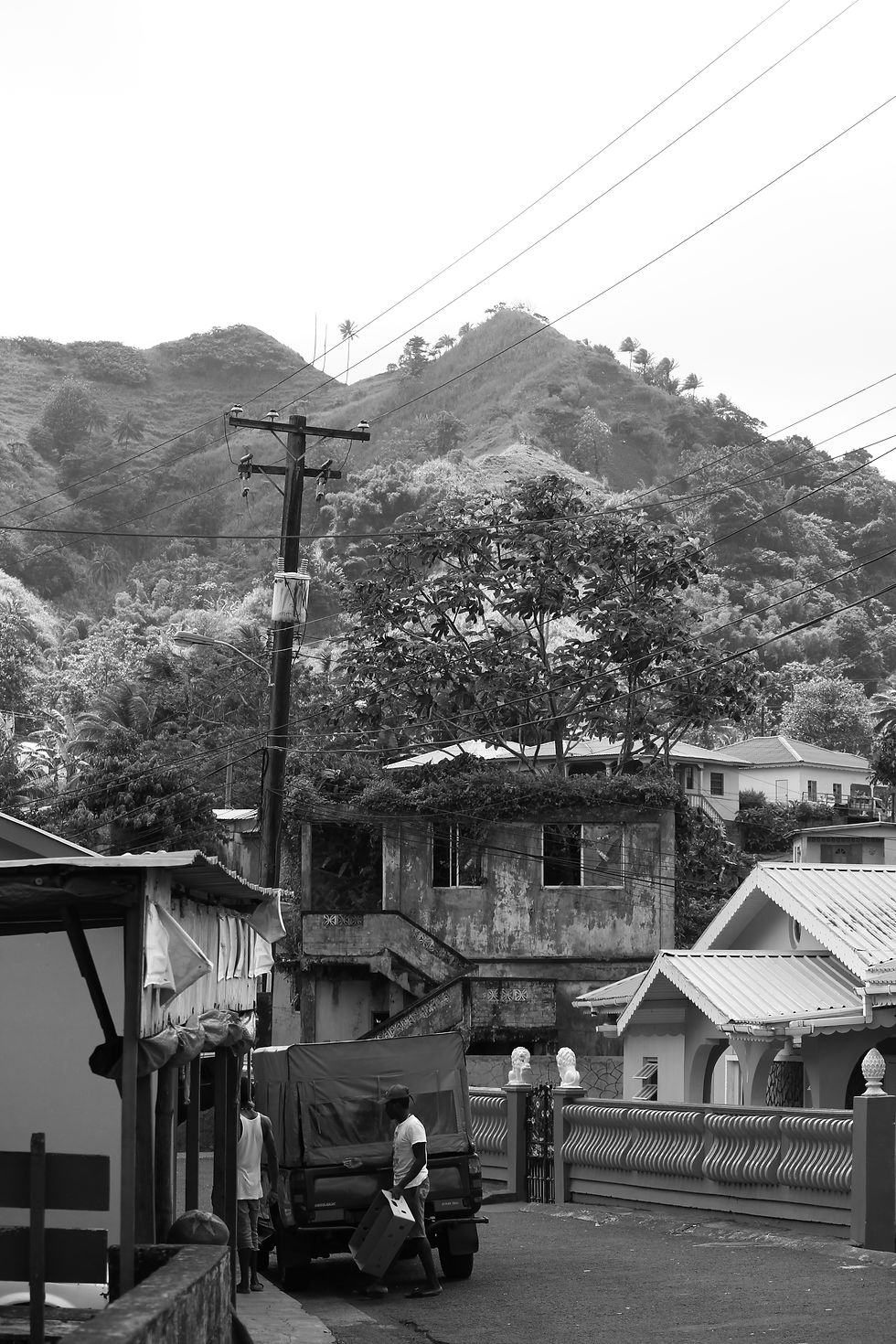
Out in the Breadbasket - Canon 7D, 55mm at f/5.6 for 1/320 second at ISO 100. Photo by Connor Fullerton on May 9th, 2018.
Working at SVGCC
St. Vincent and the Grenadines Community College (SVGCC) is both my host and my first workplace for the summer. Following an orientation at the Villa Campus not far from my apartment, Osbourne Bowens, Dean of the SVGCC Division of Technical and Vocational Education (DTVE) introduced me to many of the faculty at the DTVE Campus where I’d be staying for the first two week. Regular classes were done for the semester when I started my work at the campus, and students were in the midst of exams in courses like small business management, mechanics, and hospitality just to name a few. After my orientation, I met with several faculty members to dig into a proposal for a new entrepreneurship program at the DTVE Campus; my first major assignment.

SVGCC Student Union Building at Villa Campus - Canon 7D, 50mm at f/7.1 for 1/160 second at ISO 200. Photo by Connor Fullerton on April 30th, 2018.
Creating Innov8
After seeing the successes of Cutliv8 Entrepreneurial Sandbox at the Dal AC and being a Cultiv8 Ambassador, I was excited to be the one writing the proposal for a similar program at SVGCC called “Innov8”. For context, entrepreneurial sandboxes are organizations dedicated to fostering entrepreneurial skills in students and locals to give them the tools necessary to be successful entrepreneurs and business owners.
Turns out several of the SVGCC faculty met the folks at Cultiv8 Sandbox in the past year, which inspired them to get an entrepreneurial sandbox set up at the DTVE Campus. Innov8 will be a new program which aims to build on the successes shown in other sandboxes while tailoring Innov8’s framework to meet the needs of the SVGCC students. Partway through drafting the proposal, a dozen DTVE agribusiness students were selected to participate in a discussion and interview; the results were definitive, and students liked the ideas for Innov8! I’ll be continuing to develop the program’s framework through the summer.
Going with the Flow
Prior to coming to the Caribbean and shortly after my arrival, I was encouraged to go with the flow of the island life. You can almost feel it in the air - the island has its own way, and it feels more relaxed than back home.
Going to the Market
The markets are densely packed, and in a way, it reminded me of the Souqs of Doha, Qatar but instead filled with agri-goods and handmade goods of all sorts. Options were abundant, and if you didn’t like what one vendor had to offer there was always another only a few stalls over that might have something you like better. The markets were more-or-less divided into three main sections – the farmers market, the fish market, and the meat market. The plethora of options was a delight to see, given that much of the food available was rarely (if ever) available in Nova Scotia. For example, mangos were a relative bargain – only $5 ECD (~$2.30 CAD) for 7 mangos!
Another example, breadfruit, is a staple crop here – it is a highly nutritious crop and is both easy to grow and abundant. I had never heard of breadfruit before, but it’s comparable to potatoes for those who aren’t accustomed to it. Breadfruit seems like one of the superfoods that lives up to its regional reputation and not surprisingly it has seen use as a form of food aid due to its superb nutritional value!

At the Kingstown Farmers Market - Canon 7D, 18mm at f/5.6 for 1/500 second at ISO 400. Photo by Connor Fullerton on May 5th, 2018.

Packed Corridors at the Kingstown Farmers Market - Canon 7D, 20mm at f/5.6 for 1/15 second at ISO 400. Photo by Connor Fullerton on May 5th, 2018.
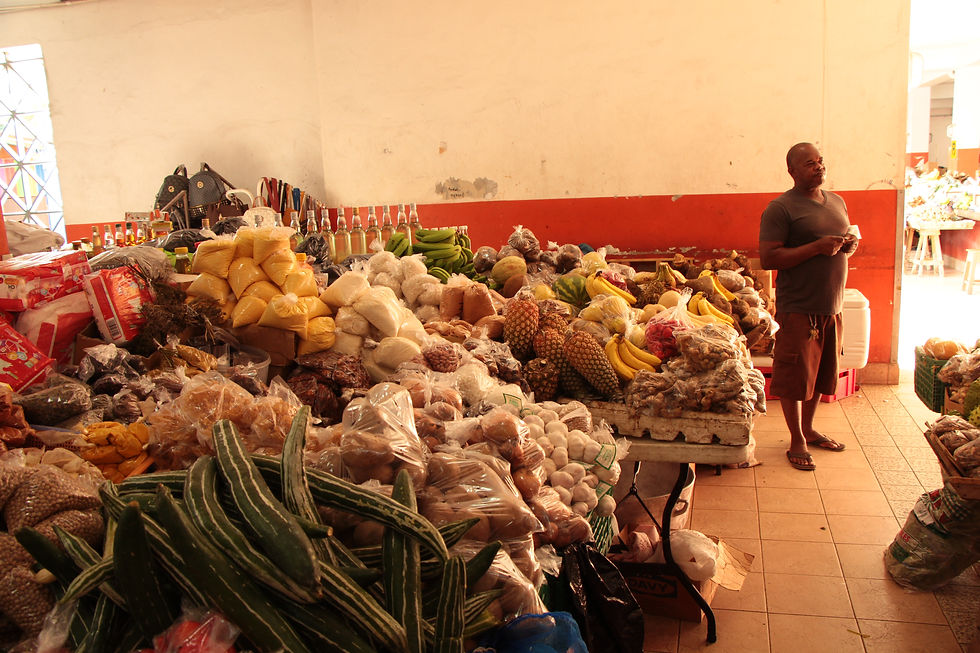
A bit of everything - Canon 7D, 18mm at f/5.6 for 1/13 second at ISO 400. Photo by Connor Fullerton on May 5th, 2018.

Anything and everything for sale, everywhere - Canon 7D, 18mm at f/5.6 for 1/800 second at ISO 400. Photo by Connor Fullerton on May 5th, 2018.

At the Kingstown Fish Market - Canon 7D, 50mm at f/5 for 1/25 second at ISO 800. Photo by Connor Fullerton on May 5th, 2018.

At the Kingstown Fish Market - Canon 7D, 18mm at f/5.6 for 1/15 second at ISO 800. Photo by Connor Fullerton on May 5th, 2018.

“Hey, come take a picture!” - Canon 7D, 85mm at f/5.6 for 1/80 second at ISO 800. Photo by Connor Fullerton on May 5th, 2018.

A busy day at the markets - Canon 7D, 113mm at f/5.6 for 1/50 second at ISO 200. Photo by Connor Fullerton on May 19th, 2018.
Obligatory comment on the state of liquor in St. Vincent
Since starting IFB, most of my projects papers have been centered around liquor products. It comes as no surprise that one of the first things I had to check out was the cost of rum on the island.
As a domestic good, rum in St. Vincent is significantly cheaper (and I mean significantly) cheaper than in Canada. Just how much cheaper? The sales price of locally-distilled rum is $24 ECD for 750ml at 40% alc. or $28 ECD for 750ml at 84.5% alc.. Converting to Canadian currency, this is respectively ~$11 CAD and ~$13 CAD, which is exceptionally affordable when comparing it to the NSLC’s prices (link).
Seeing the stark contrast in prices between here and in Canada, I had plenty of questions that I asked the local faculty at the DTVE Campus. Not surprisingly, by the time these same rums reach Canada as imports they are usually marked up at least 3~6 times the price depending on the location. I can’t wait to learn more about the rum here when I intern with St. Vincent Distillers Ltd. later this summer!!!
Richmond Vale Academy
Tagging along with the SVGCC Environmental Club, Victoria and I had the chance to visit Richmond Vale Academy (RVA) on the northern portion of the island. The drive there was certainly unforgettable. The bus deftly navigated the thin winding roads which on one side was the rocky face of a mountain, and on the other side was a long drop into the Caribbean Sea. Being a little [actually, very] afraid of heights, I did as best I could to snooze away the hour-long drive that felt like it was tempting fate on every turn.

SVGCC DTVE students and staff touring RVA - Canon 7D, 18mm at f/9 for 1/320 second at ISO 100. Photo by Connor Fullerton on May 10th, 2018.
When we stepped off after said drive, RVA was a sight to behold. It was an idyllic, scenic, and self-sustaining compound. The compound sat on a peninsula of sorts, surrounded by beach at the bottom of the steep cliff. Looking around, biodiversity was obviously among one of the key items on the RVA agenda, as well as sustaining itself as much as possible off its own energy, food, and water. RVA was home to a large estate of farming plots for foods of all kind; if you could name a tropical crop, it was probably there in one form or another. The compound itself was relatively sprawling but centered around a main lodge with adjacent dormitories and kitchen areas. A series of greenhouses was strung along the sea-ward side of the compound, with mulching stations to reuse food waste and left overs to create fertilizer for crops. RVA was host to students from all over, including the Caribbean Islands, Europe and Asia. RVA offers several programs at the site, each of which offered a certificate from One World University. It was quite the place!

SVGCC DTVE students and staff touring RVA - Canon 7D, 35mm at f/5.6 for 1/250 second at ISO 100. Photo by Connor Fullerton on May 10th, 2018.

Biodiversity at RVA ft. DTVE Dean Bowens - Canon 7D, 18mm at f/8 for 1/100 second at ISO 100. Photo by Connor Fullerton on May 10th, 2018.

Almost at the northernmost point of St. Vincent! - Canon 7D, 19mm at f/8 for 1/640 second at ISO 100. Photo by Connor Fullerton on May 10th, 2018.
It's a Small World – The Lens
Compared to Canada, St. Vincent and the Grenadines is small. Then again, most countries are small compared to the second largest country on Earth. It was hard to resist looking up the size of the island and comparing it to places back home in Nova Scotia. Did you know that according to Wikipedia Halifax’s urban area is 234.77 km2 (link)? The island of St. Vincent is 389 km2. While that may seem small to Canadians, it is in practice fairly large of an island especially when you consider that roads wiggle along the mountainside. Furthermore, St. Vincent definitely feels a lot larger when you start looking at other islands: Wikipedia says Union Island towards the southern end of island chain is a mere 9 km2 (link), while the hometown Truro, Nova Scotia is 34.49 km2 (link).
It’s been said time-and-time again, where you grow up puts a lens on how you view the world – this has been a small example of that lens. Challenging the way I see the world is one of the reasons I love to live and work abroad. I hope to learn lots during my time here and grow both professionally and personally.
What’s Next?
This week, I started my attachment at Vincy Fresh, a processor of peppers and herbs to make marinades, jellies, and sauces using locally-produced goods (link). I’ve been handling receiving in the past few days and learning about the Vincy Fresh supply chain. Yesterday, there was a massive order of dasheen, so Victoria and I had some fun helping getting it ready for export. Today, I visited an arrowroot factory that Vincy Fresh will be acquiring. More details to come!

Victoria’s First Day at Vincy Fresh! - Canon 7D, 18mm at f/3.5 for 1/1250 second at ISO 200. Photo by Connor Fullerton on April 30th, 2018.






Comments